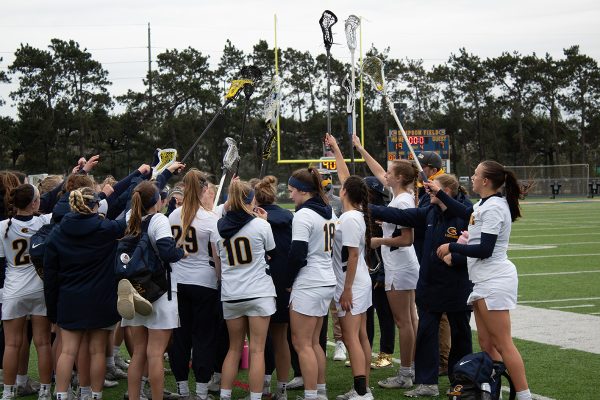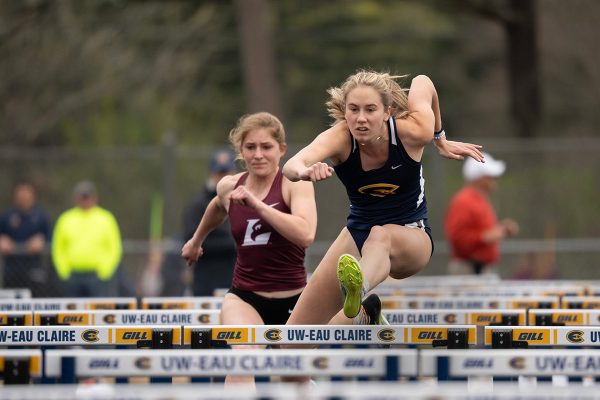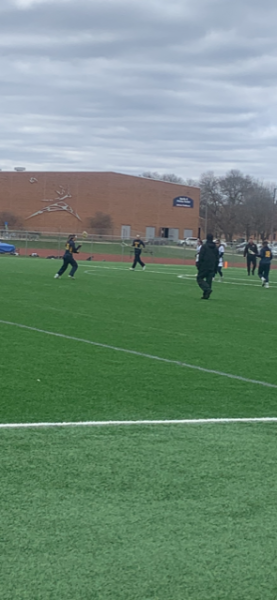Learning to be safe rather than sorry
Runners reflect on season-ending injuries, lessons learned
More stories from Meghan Hosely
Photo by Kendall Ruchti
Cross country runners Kelsey Jaeger, Matt Cooper and Lucy Ramquist all have learned throughout their years to be cautious with injury instead of pushing through pain.
When then-sophomore Kelsey Jaeger felt a pain in her foot during the indoor track season, she first thought she was sore from too much training the day before.
“… And after a few weeks, I was like, ‘OK, this is more than soreness, I need to do some cross training,’” Jaeger said.
Jaeger, now a fifth-year senior, realized what seemed to be a soreness quickly turned into a bigger issue. Eventually, she learned she had a plantar plate tear in her foot, and had to get surgery on it in the middle of her sophomore season.
Jaeger missed both her sophomore season of track and junior season of cross country the following fall.
Cross country head coach Dan Schwamberger said he tries to promote to his runners to know the difference between being sore, having pain and when to take time off.
“With distance runners, they’re pretty stubborn,” Schwamberger said. “It’s like, ‘Oh, this isn’t that big of a deal, I’m just going to run through it.’”
Senior Lucy Ramquist said she has been “naive” to the effects of overtraining. Ramquist took off her entire sophomore season due to an Achilles tendon injury.
“I should’ve backed off way sooner than I did,” Ramquist said.
The rule of thumb for the cross country team is the quicker a potential injury is dealt with, the quicker a runner can move on and get back to training, Schwamberger said.
Cross training is common among runners on the team, Schwamberger said. It’s a way for athletes to still get a high-intensity workout, but with less impact on the joints than running. Popular methods include elliptical workouts, cycling or getting into the pool.
Schwamberger said the way he sets up training for each week is relatively similar: there are two main workouts, followed by “recovery days,” which allow the runners to reap the benefits from the main workouts.
Recovery days are when most runners go to the gym to cross train, Schwamberger said.
“On recovery days, sometimes we’ll have half the team in the gym,” he said. “It’s nice; they’re still working out, loosening up, getting their heart rate going. And the next day, they’ll be recovered”
Schwamberger said typically, he lets the athletes decide whether or not they should cross train for practice or not.
Senior Matt Cooper said when he had a femoral stress fracture his sophomore year, he would meet with Schwamberger on a weekly basis to review a training plan for the week ahead, and found the head coach to be flexible with the plan.
“Even when you’re feeling a little ache or pain, you can say, ‘Hey Dan, my legs are kind of beat up … I don’t think I should run today,’” Cooper said. “He’s usually very open to that possibility. It’s not like there’s one strict plan everyone has to do each day. It’s very individualized.”
Ramquist said Schwamberger is in tune with every runner on both teams, and athletes are good about going to him about potential injuries.
“(Schwamberger) will make sure to have a discussion (with the athletes),” Ramquist said. “You’ll get to tell the story of why something’s hurting, and then decide whether or not you need to take time off.”
Athletic training professor Tadd Turnquist oversees both the cross country teams during the season. He said in addition to cross training, there are other things runners can do to be mindful of their body.
“A lot of people underestimate the power of nutrition… sleep and activity in moderation,” Turnquist said. “If they’re running too much, they’re naturally going to have certain changes that are going to take place physiologically in their bodies.”
Turnquist said if athletes alter their training and do everything in moderation, oftentimes the athletic trainers see a decrease in injuries pertaining to overuse.
Lessons learned
After Jaeger’s surgery, she said she began to put extra time in outside of practice to take care of her body.
“I’ve been trying to do anything I can to just stay healthy and to listen to my body,” Jaeger said. “I foam roll everyday, I ice, I just try to do the little things to try to stay on top of it.”
Cooper said his time on the sidelines his sophomore year taught him how to be a “really good teammate,” especially cheering people on and keeping a positive environment.
“It also enhanced my desire to … be interested in the rehab process that runners and athletes in general go through,” Cooper said.
Taking an entire season off taught Ramquist that the moment something hurts, to take time off right away, she said. Discussing how her body feels to her coaches is something Ramquist is good at, whether she’s feeling fatigued or hurting.
“I’m also cautious about overtraining,” Ramquist said. “I used to think that more running was better. That’s not necessarily the case; it’s better to get more training through cross training than to not get injured in the first place.”











